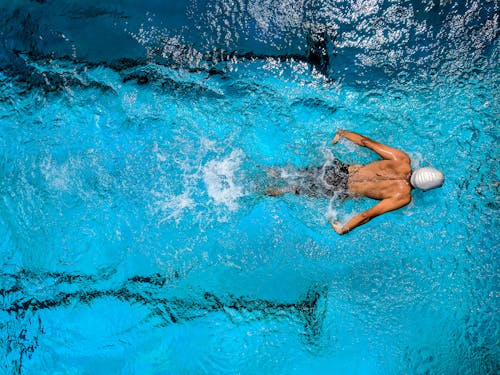A Changing Olympic Landscape
The Olympic Games have always been a reflection of the times. What began in 1896 with just nine sports has grown into a massive global event, shaped by culture, politics, technology, and the shifting interests of new generations. In recent years, the International Olympic Committee (IOC) has shown a greater willingness to adapt. As a result, several new sports have been introduced—skateboarding, surfing, and sport climbing among them.
But the Games are far from finished evolving. With the world’s sporting tastes continuing to change, and with youth culture, digital engagement, and global popularity all influencing decision-making, more changes are on the horizon.
What Makes a Sport Olympic-Worthy?
Before a new sport joins the Olympic program, it has to pass several criteria. The IOC considers a number of factors:

- Global participation: The sport must be practiced widely across different continents.
- Youth appeal: It must resonate with younger audiences.
- Gender equality: The sport must be inclusive, with opportunities for men and women.
- Infrastructure: It must be feasible to host, both financially and logistically.
- Governance: It must be organized under a recognized international federation.
These standards are meant to ensure that any addition is not only exciting but sustainable and fair.
Strong Contenders for Future Games
Several sports are actively pushing for Olympic inclusion in upcoming editions, and many have already been shortlisted or trialed at multi-sport events. Here are some of the top contenders:
1. Flag Football
With the growing international popularity of American football, a non-contact version—flag football—has gained serious momentum. It was recently accepted for the 2028 Los Angeles Olympics. Its fast-paced format, safety advantages, and youth appeal make it a solid addition, especially in a country where football is deeply rooted in sports culture.
2. Squash
Long considered one of the most deserving sports left out of the Olympics, squash has faced numerous rejections despite its global reach and rich history. Played in over 180 countries, squash has world championships, professional tours, and a strong youth base. Its inclusion for 2028 is a long-awaited milestone, signaling recognition for its technical brilliance and athletic demands.
3. Breakdancing (Breaking)
While some were surprised by its inclusion in Paris 2024, breaking represents a shift toward cultural expression and physical artistry. With deep roots in hip-hop, it combines strength, rhythm, creativity, and global appeal—particularly among urban youth. If its debut proves successful, it could remain a fixture in future Games.
4. Esports
Though still a polarizing topic, esports can’t be ignored. With massive global audiences, multi-million-dollar prize pools, and established governing bodies, competitive gaming continues to blur the line between sport and digital performance. While it hasn’t made it to the full Olympic program yet, experimental events and IOC-run esports competitions suggest that its Olympic future may only be a matter of time.
5. Lacrosse
A revival of a centuries-old game with Indigenous roots, lacrosse has made huge strides in recent years. The faster-paced sixes format—adapted to fit Olympic standards—has been gaining traction. With strong support from North America and a growing global base, lacrosse is aiming for a return to the Olympics after over a century.
6. Cricket
One of the world’s most-watched sports, cricket is finally getting a chance to shine on the Olympic stage. Set to be included in the 2028 Los Angeles Games, the shorter T20 format makes it more TV- and fan-friendly. With massive followings in countries like India, England, and Australia, cricket’s addition may bring an entirely new audience to the Olympics.
Other Sports Watching Closely from the Sidelines
- Parkour: Often seen in viral videos, this urban sport emphasizes fluid movement through cityscapes and obstacles. Its aesthetic appeal and physical intensity are attracting young athletes and spectators alike.
- Wushu: A Chinese martial art with both combat and performance elements, Wushu offers a visually stunning display of skill and tradition.
- Roller Sports: Inline skating, speed skating, and artistic roller sports have been trying to gain a foothold, especially in countries where they’re part of everyday recreation.
- Korfball and Floorball: Particularly popular in parts of Europe, both are mixed-gender team sports that align with the Olympic push for inclusion and balance.
Why the Olympics Must Continue to Adapt
The addition of new sports isn’t just about modernizing the Games—it’s also about remaining relevant. Younger generations consume sports differently. They want faster formats, digital interaction, and culturally resonant activities. The IOC’s willingness to adapt to these trends is what keeps the Games exciting and representative of a broader global population.
There’s also a commercial element. New sports mean new viewers, new sponsors, and new ways to package the Olympics in a crowded media landscape.
Balancing Tradition and Progress
As the Olympics evolve, there’s always the challenge of preserving tradition while embracing change. While new sports enter the spotlight, others risk being dropped due to cost, waning popularity, or lack of global reach. Wrestling, one of the oldest Olympic events, was nearly removed in 2013—proof that nothing is guaranteed.
The key lies in balance. Classic sports form the identity of the Games, while new ones inject energy and relevance.
What the Next Decade Could Look Like

By 2032 or 2036, the Olympic lineup may look quite different. Imagine an opening ceremony followed by high-stakes cricket matches, streamed esports finals, and breakdancers dazzling audiences under stadium lights. Meanwhile, athletes in lacrosse jerseys and squash courts filled with energy could be standard fare.
As technology continues to impact training, viewing, and participation, the definition of “sport” itself will continue to expand. And as long as the Olympics reflect the world around them, they’ll remain one of the most powerful stages in global sport.
The future is not about replacing what came before—it’s about building something that represents everyone. And that’s exactly what the next generation of Olympic sports is beginning to do.





